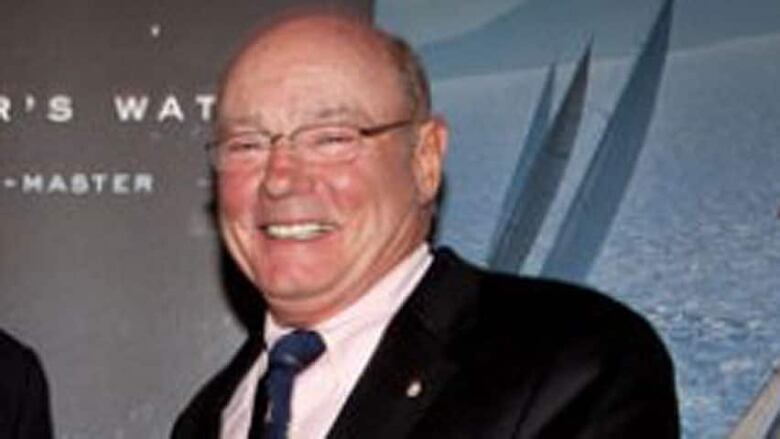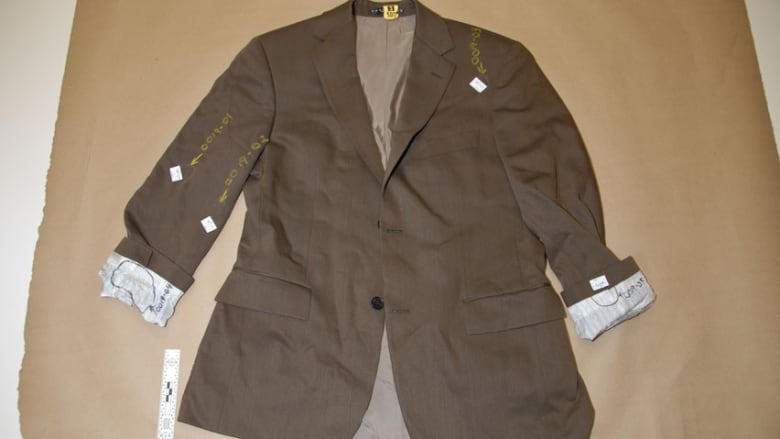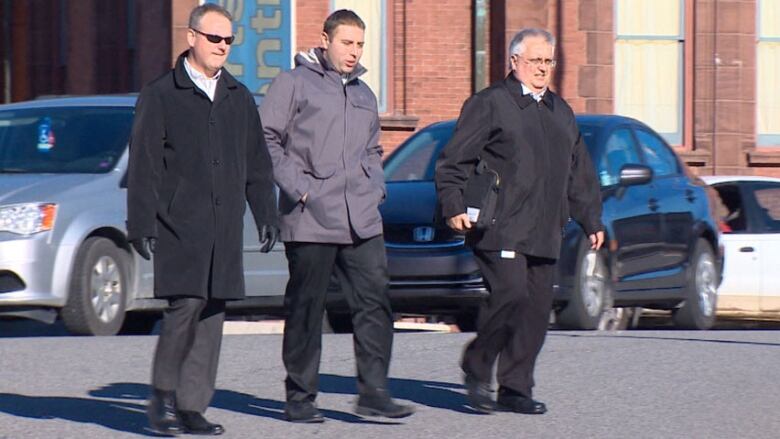Crown wraps up case against Dennis Oland in father's death
DNA extracted from accused's jacket matched Richard Oland's profile with high certainty, expert says

Crown prosecutors wrapped up their second-degree murder case Wednesday in Saint Johnagainst DennisOlandin the 2011 slaying of his fatherby presenting more evidence about the certainty of the DNA on the accused's bloodstained jacket matchingthat of the victim.
ThomasSuzanski, a forensic scientist at theRCMPlab in Ottawa, told the courtthat the chances are one in20 quintillion thattheDNA extracted from three bloodstains on the brown sports jacket is not Richard Oland's.
- Live blog:Dennis Oland's second-degree murder trial: Nov. 25
- On mobile? Get live coverage of the trial here
Suzanki, who has worked for the RCMP's crime lab since 1989 and was deemed an expert by the Court of Queen's Bench, said in hisopinion, the DNA came from the blood.

The threebloodstains in question arelocated on theoutside of the jacket on the right sleeve, the upper left chest, and on the back, in the centre, near the hem.
Suzanski was the 44th and final Crownwitness to testify at the trial, which started on Sept. 16.
The defence team will announce on Thursday morning whether it plans to present any evidence.
Thebody of RichardOland, 69, was discoveredlying face down in a pool of blood in his Saint John investment firm office on July 7, 2011, with "hundreds" of blood-spatter stains around him.

DennisOland, 47, who was the last known person to see his father alive during a meeting at his Canterbury Street office the night before,has pleaded not guilty to second-degree murder andis standing trial before a judge and jury.
Oland told police during avoluntary statementon July 7he was wearing a navy blazer when he visited his father on the night in question, but security video of him earlier that day shows he was wearing a brown jacket.
The Hugo Bossjacket, which Oland's wife Lisa took to the dry cleaners the following day, wasseized from his bedroom closet on July 14.

Suzanski explained that Kearseyhad used a program called Profiler Plus, which uses nine areas for comparison. He used a more "discriminating" program in his followupanalysisin May 2015, he said.Identifiler Plus compares 15 areas and is more accurate.
The estimated probability of selecting an unrelated individual at random from the Canadian Caucasian population with the same profile is onein 20 quintillion.- Thomas Suzanski, forensic scientist
"The estimated probability of selecting an unrelated individual at random from the Canadian Caucasian population with the same profile is onein 20 quintillion," Suzanski concluded.
"Based on the RCMP Canadian Caucasian population [database], it is 3.4 million times more likely that the DNA evidence obtained would be observed if Richard Oland was the donor of the DNA obtained from [the three areas in question]rather than a full sibling," he added.
Suzanski described the samples used as being "clean," with no evidence of degradation. They produced a full, single-source DNA profile.
Under cross-examination by defence lawyer Alan Gold, Suzanski agreed he could not say how the DNA got on the jacket or how long it had been there.
Gold pointed out that DNA can be transferred by touchand noted some DNA found on the inside left pocket seam appears to be from a third, unknown party.
DNA extracted from three other stains on the inside cuffs had a mixed profile.The major component of the two on the right cuffmatchedthe victim's with a probabilityof one in 180 million it was random, while the minor component of the stain on the left cuff matchedwith a probability of one in 40.
Judge instructs jury on blood tests
Earlier in the day, JudgeJohn Walsh gave the jurorsinstructions on the evidence they've heard regarding the two types of tests used to check for the presence of blood.
He said preliminary tests, such as Hemastix, are not conclusive and can get falsepositives from a wide range of other substances, such as leather, dirt,and bodily fluidssuch as saliva and perspiration.

In situations where the RCMP lab confirmed blood was present with a secondaryhemochromogentest, however,"that's evidence you can consider in your evidentiary assessment," hesaid.
The three stains on the accused's jacket were confirmed to be blood using the hemochromogen test, whichisspecific for blood andis not known to render anyfalse positives, the court has heard.
RCMP lab findings about Dennis Oland's brown sports jacket March 2012-May 2015 (Part of 52-page court exhibit) (PDF KB)
RCMP lab findings about Dennis Oland's brown sports jacket March 2012-May 2015 (Part of 52-page court exhibit) (Text KB)CBC is not responsible for 3rd party content












_(720p).jpg)


 OFFICIAL HD MUSIC VIDEO.jpg)
.jpg)



























































































